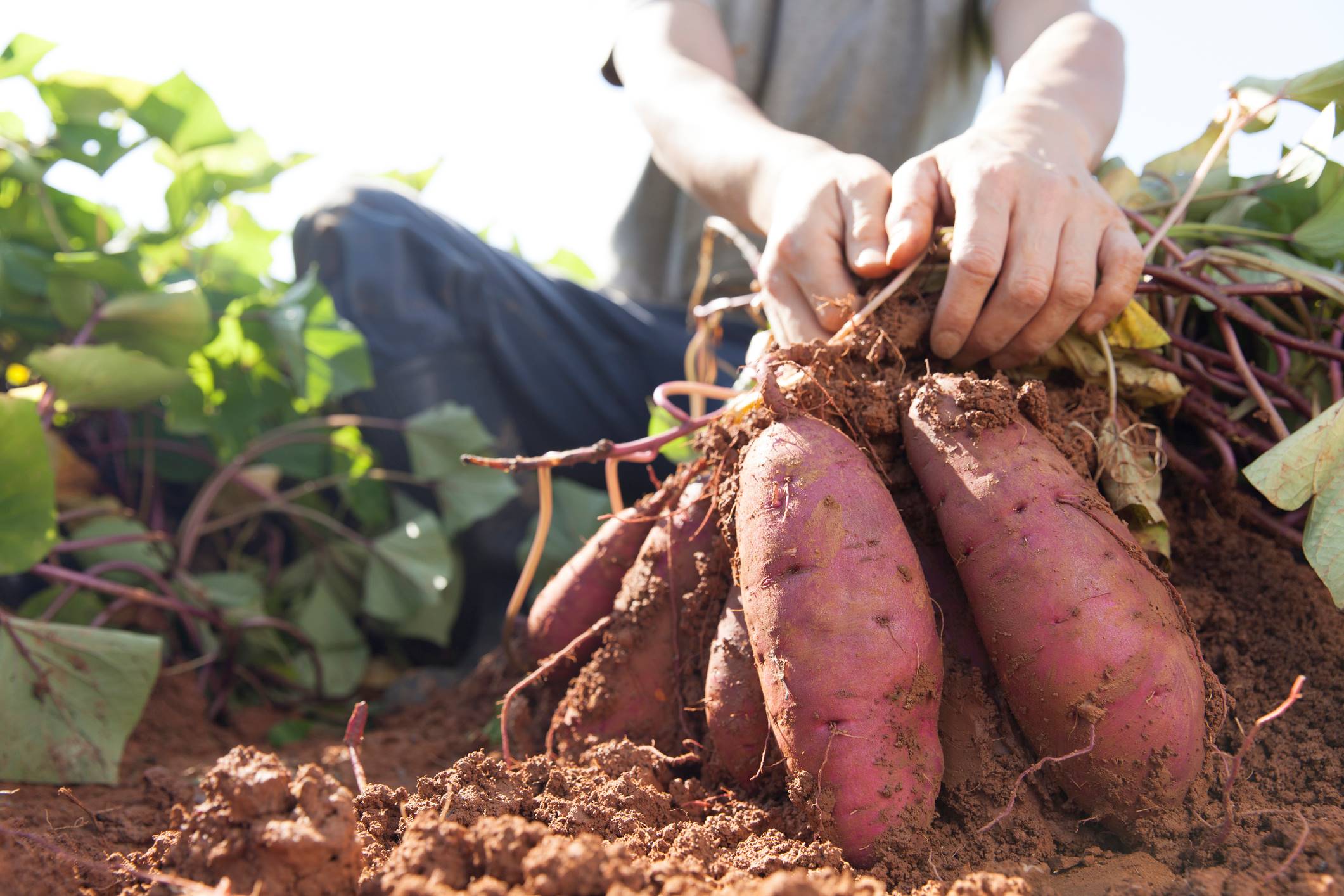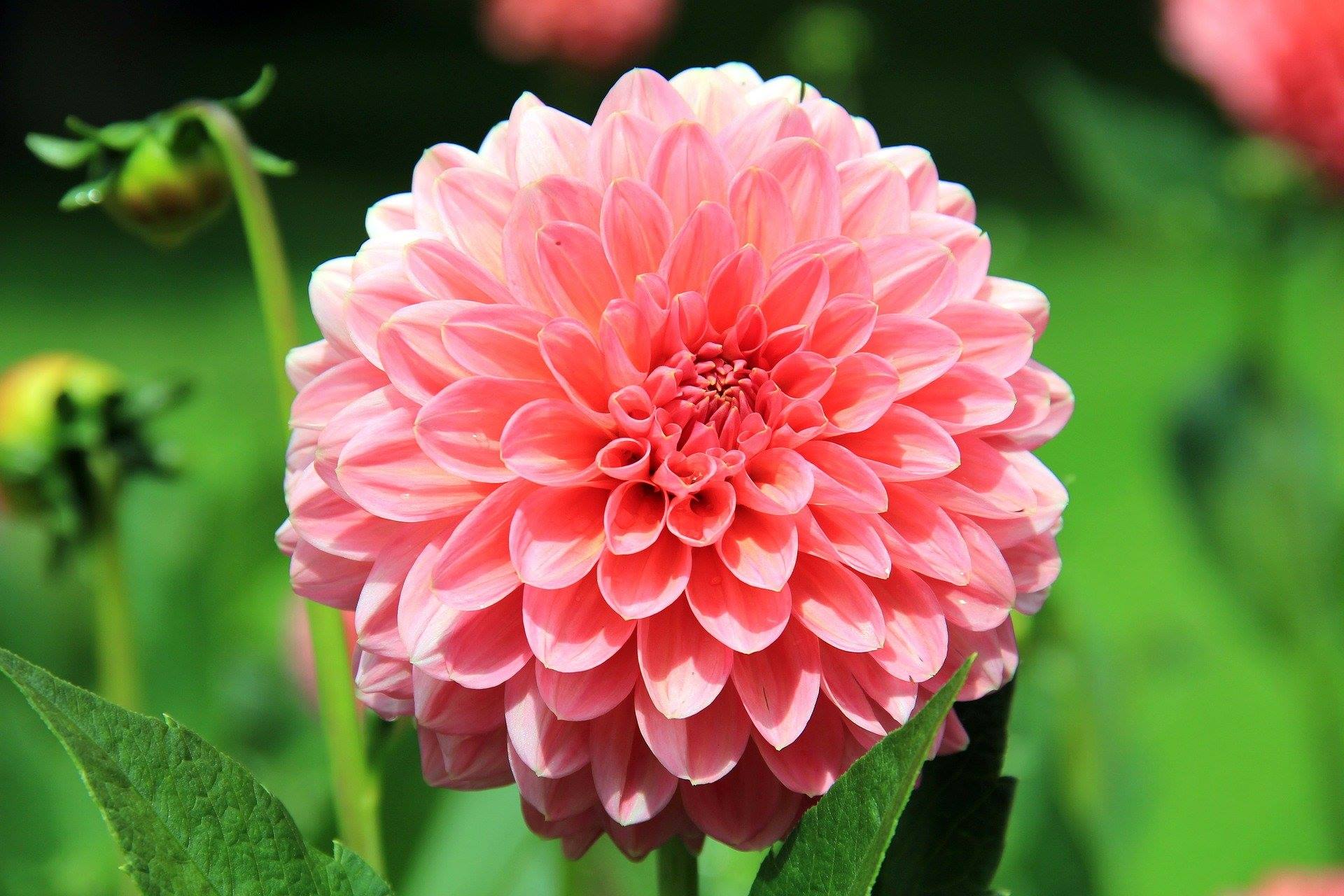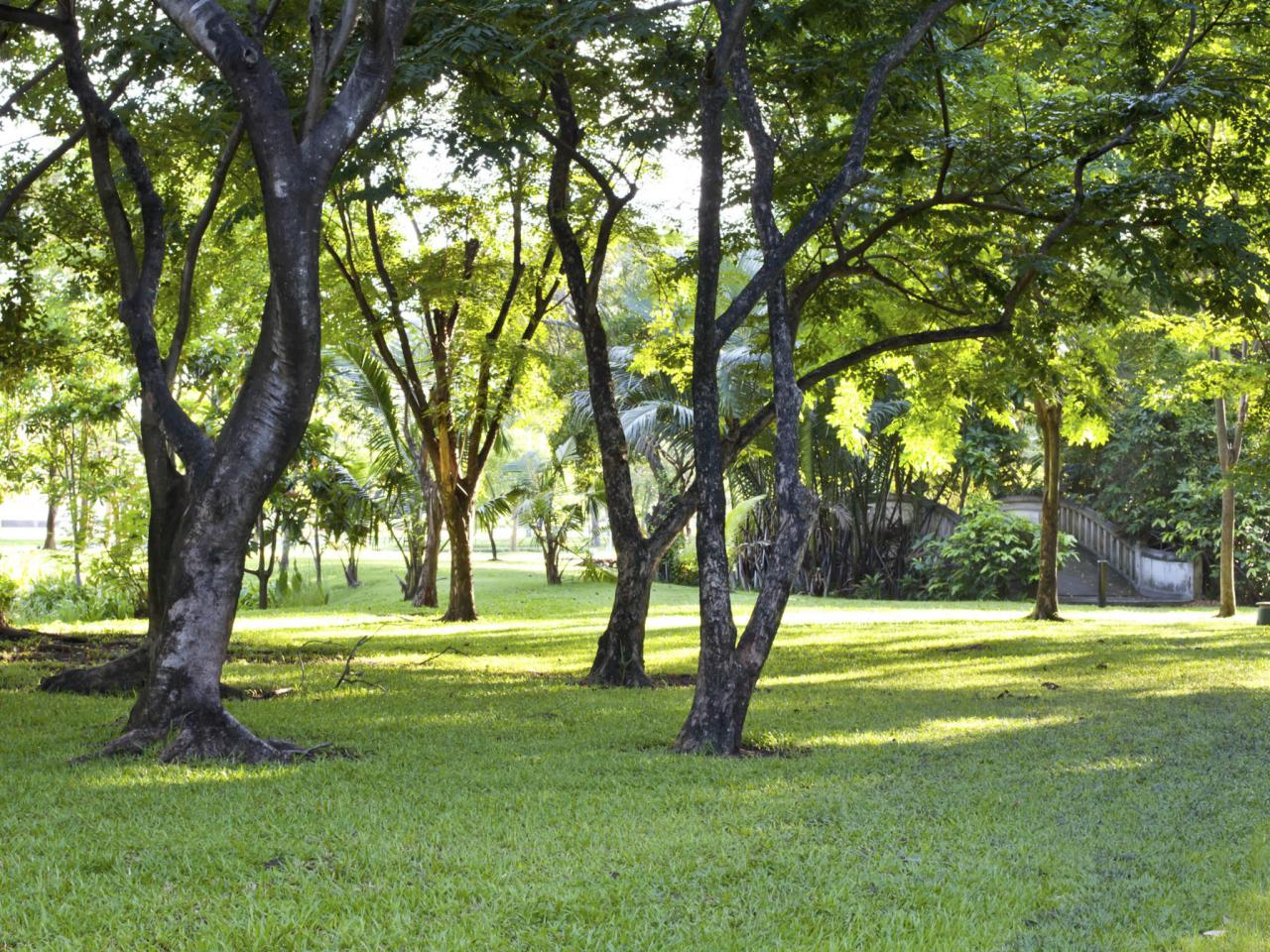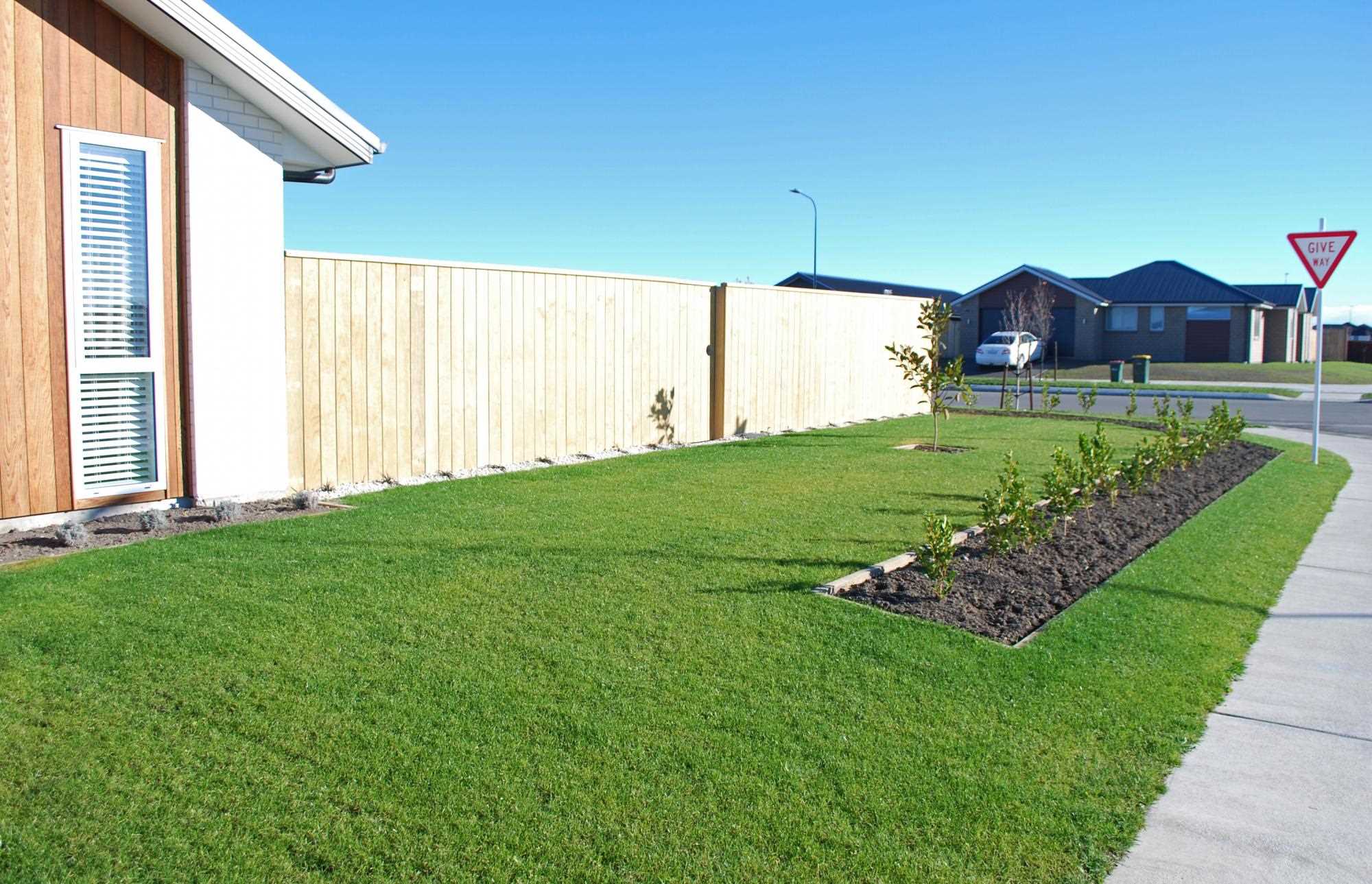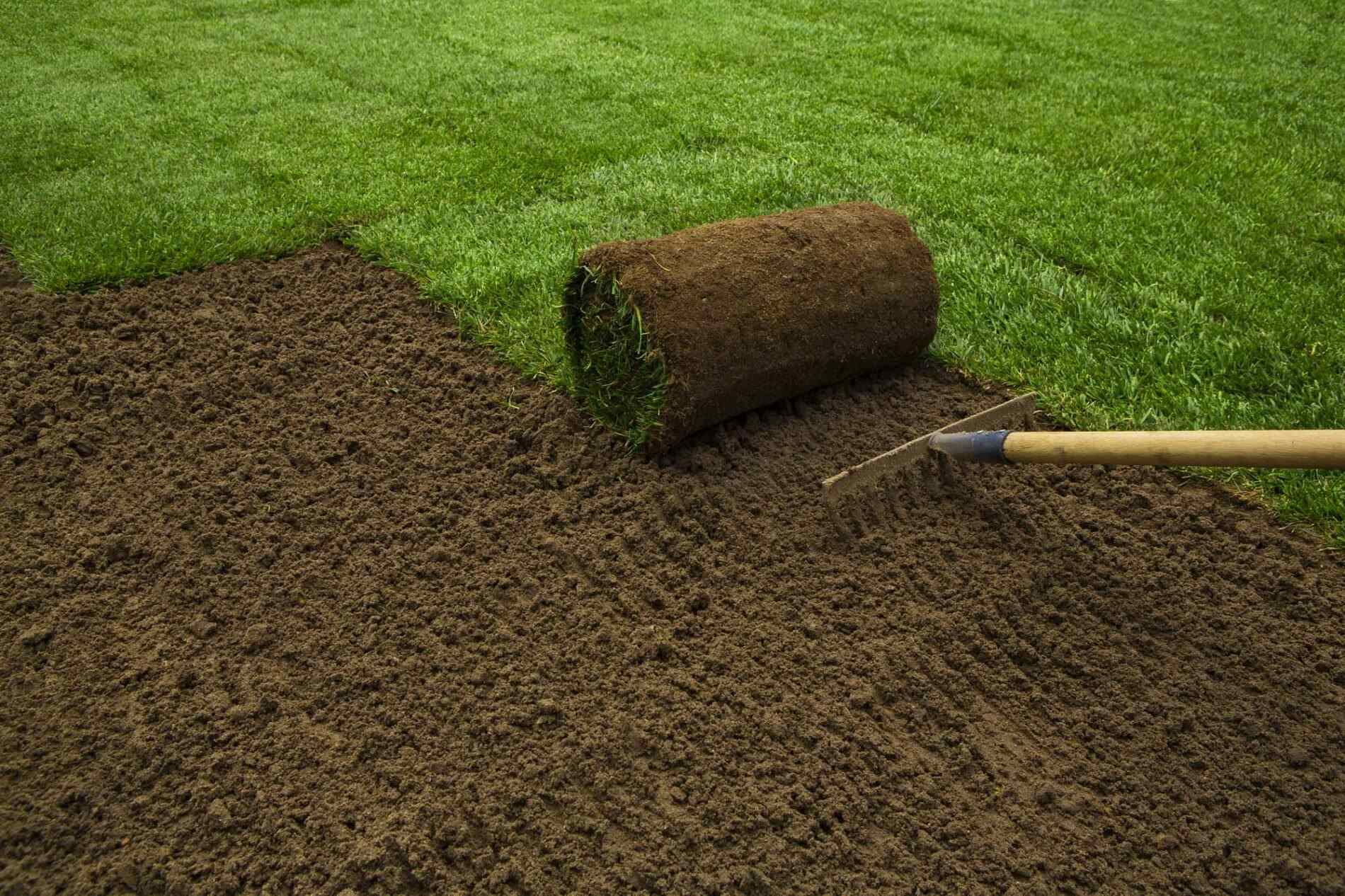Home>Types of Gardening>Ornamental Gardening>How Long After Planting Grass Seed Will It Grow
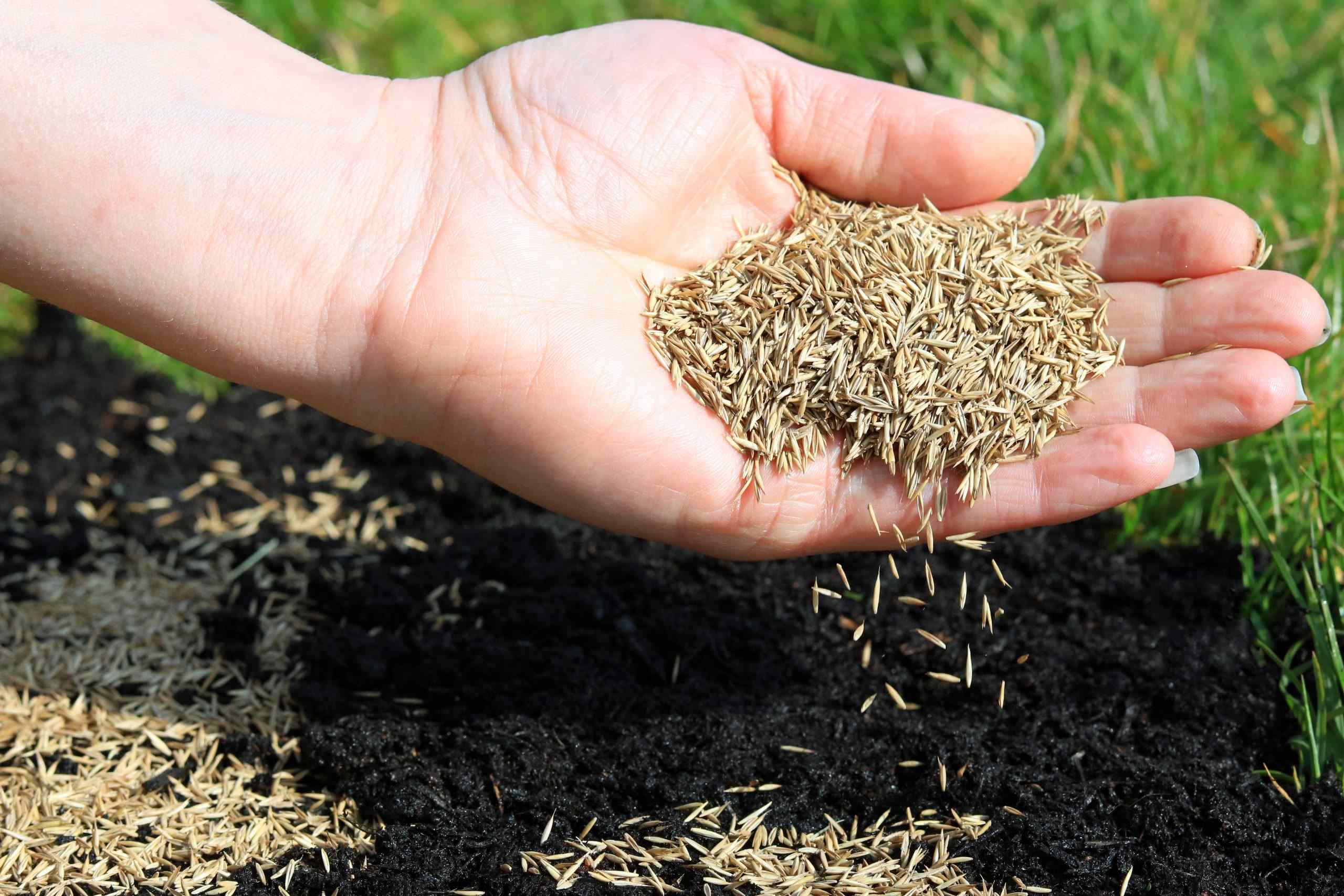

Ornamental Gardening
How Long After Planting Grass Seed Will It Grow
Modified: January 22, 2024
Discover how long it takes for grass seed to grow after planting and get expert advice on ornamental gardening.
(Many of the links in this article redirect to a specific reviewed product. Your purchase of these products through affiliate links helps to generate commission for Chicagolandgardening.com, at no extra cost. Learn more)
Table of Contents
Introduction
Welcome to the world of ornamental gardening! If you have a passion for creating a beautiful and visually appealing outdoor space, then ornamental gardening is the perfect hobby for you. Whether you have a sprawling backyard or a cozy balcony, ornamental gardening allows you to add charm, color, and personality to your surroundings.
Ornamental gardening focuses on cultivating plants and flowers for their aesthetic value rather than for practical purposes like growing fruits or vegetables. It allows you to express your creativity and design a space that brings joy and tranquility to your life.
In this comprehensive guide, we will explore the various aspects of ornamental gardening and provide you with the knowledge you need to create a stunning outdoor oasis. From understanding the factors that affect plant growth to learning about the ideal conditions for different types of ornamental plants, we will cover it all.
Not only will we delve into the technical aspects of ornamental gardening, but we will also discuss the importance of maintenance and care. Gardening is not just about planting and leaving the plants to grow; it requires regular attention and care to ensure that your garden flourishes.
Whether you are a novice gardener looking to enhance your green thumb or an experienced gardener seeking fresh inspiration, this guide is here to help. So, grab your gardening gloves and let’s dive into the world of ornamental gardening!
Factors Affecting Grass Seed Growth
When it comes to growing grass from seed, several factors can impact the success of germination and subsequent growth. Understanding these factors will help you create the best possible conditions for your grass to thrive.
The first factor to consider is the quality of the grass seed itself. High-quality seed from reputable sources will generally have a higher germination rate and produce healthier, more vigorous plants. Ensure that the seed is fresh, as old or improperly stored seed may have a lower viability.
Another crucial factor is soil preparation. The soil should be well-draining to prevent waterlogging, which can hinder seed germination. Remove any debris, rocks, or weeds from the area and loosen the topsoil to create a favorable environment for the development of grass roots.
Proper soil pH is also essential for grass seed growth. Most grass species prefer a slightly acidic to neutral pH range of 6.0 to 7.5. Conduct a soil test to determine the pH level and make any necessary amendments to adjust the acidity or alkalinity of the soil.
Moisture is a critical factor during the germination period. Adequate watering is crucial to keep the soil consistently moist but not waterlogged. The lack of water can delay or prevent germination, while overwatering can lead to rotting of the seeds. The ideal moisture level is about 1 inch of water per week.
Temperature plays a vital role in grass seed growth. Different grass species have different temperature requirements for optimal germination. Warm-season grasses, such as Bermuda or Zoysia, prefer temperatures between 75 to 85°F (24-29°C), while cool-season grasses like Kentucky Bluegrass and Fescue prefer temperatures between 60 to 75°F (15-24°C).
Lastly, sunlight is a significant factor in the growth of grass seeds. Most grass species require direct sunlight for a minimum of 4 to 6 hours a day for healthy growth. Insufficient sunlight can lead to weak and thin grass blades, while too much shade can inhibit their growth.
By considering these factors and providing the optimal conditions for grass seed growth, you can significantly increase the chances of successful germination and establishment of a lush and vibrant lawn. Now that we have explored the factors influencing grass seed growth, let’s move on to understanding the germination period in the next section.
Germination Period
The germination period refers to the time it takes for grass seeds to sprout and emerge from the soil. Understanding the germination period is essential for planning and managing your lawn establishment effectively.
The length of the germination period varies depending on the grass species and environmental conditions. Typically, cool-season grasses germinate within 7 to 21 days, while warm-season grasses may take 14 to 28 days.
During the germination period, the seeds absorb water and nutrients from the soil, swell, and eventually break open. Tiny roots begin to grow downwards, anchoring the seedling, while shoots develop and push upwards towards the surface.
It is important to note that germination requires consistent moisture. Keep the soil moist throughout the germination period to promote seed growth. If the soil dries out, it can delay or prevent germination altogether. Regular, light watering is generally recommended to maintain moisture levels.
Patience is key during the germination period, as visible growth may take some time. Be patient and avoid overwatering or disturbing the soil, as this can disrupt the germination process.
Understanding the germination period allows you to plan your lawn care activities accordingly. For example, you should avoid heavy foot traffic or mowing during this time to prevent damage to the delicate seedlings.
By providing the optimal conditions and allowing sufficient time for germination, you can ensure a successful grass seed establishment. With patience and careful nurturing, you’ll soon see the rewarding sight of young sprouts breaking through the soil surface, signaling the start of a lush and healthy lawn.
Ideal Conditions for Grass Seed Growth
To ensure successful grass seed growth, it is essential to create the ideal conditions for the seeds to germinate and establish healthy plants. Let’s explore the key factors that contribute to optimal grass seed growth.
1. Soil Preparation: Start by preparing the soil. Remove any debris, rocks, or weeds from the area as they can hinder the growth of grass seedlings. Loosen the topsoil to a depth of 4-6 inches (10-15 cm) to encourage root penetration and healthy growth.
2. Quality Seed: Always choose high-quality grass seed suitable for your region and desired lawn characteristics. Look for certified seed varieties that are known for their germination rate and disease resistance.
3. Proper Seeding Rate: Follow the recommended seeding rate specified by the seed manufacturer. Over-seeding can lead to overcrowding and competition for resources, while under-seeding may result in sparse grass coverage.
4. Watering: Water the seeded area consistently to keep the soil moist but not waterlogged. Irrigate lightly to prevent seed movement and ensure even water distribution.
5. Temperature: Different grass species have different temperature preferences for optimal growth. Ensure that the soil temperature is within the recommended range for your chosen grass species. Germination may be delayed if temperatures are too low or too high.
6. Sunlight: Most grass species require direct sunlight for healthy growth. Ensure that the seeded area receives at least 4-6 hours of sunlight per day. In areas with excessive shade, consider selecting shade-tolerant grass varieties.
7. Regular Maintenance: A proper maintenance routine is crucial for grass seed growth. Keep the area free from weeds, as they can compete for nutrients and hinder grass growth. Monitor moisture levels, and water as needed. Avoid heavy foot traffic until the grass seedlings are well-established.
By providing the ideal growing conditions, you give your grass seeds the best chance of germination and healthy growth. Remember to tailor your approach based on the specific requirements of your chosen grass species to create a vibrant and resilient lawn.
Watering and Fertilizing Requirements
Watering and fertilizing are vital aspects of caring for your lawn and promoting healthy grass growth. Understanding the proper techniques and requirements for watering and fertilizing will help ensure a lush and vibrant lawn. Let’s explore these important aspects in more detail.
Watering:
Proper watering is crucial for grass seed germination and establishment, as well as ongoing lawn maintenance. Here are some guidelines to follow:
- Consistent Moisture: During the germination period, the soil should be kept consistently moist. Water lightly but frequently to prevent the soil from drying out.
- Deep Watering: Once the grass has established, shift to deep watering. Provide enough water to penetrate the root zone, encouraging the roots to grow deeper into the soil. This helps the grass become more resistant to drought and environmental stress.
- Watering Frequency: Water deeply and less frequently rather than shallow, frequent watering. This encourages the grass to develop a stronger root system and avoids creating a shallow-rooted lawn that is susceptible to drought.
- Time of Day: Water your lawn early in the morning or in the evening. This allows the water to penetrate the soil before evaporation occurs, reducing water waste and increasing absorption.
Fertilizing:
Fertilizing provides essential nutrients to the grass, promoting healthy growth and vibrant color. Consider the following fertilizing tips:
- Soil Test: Conduct a soil test to determine the nutrient levels in your soil. This helps identify any deficiencies and allows you to choose the appropriate fertilizer.
- Fertilizer Selection: Select a fertilizer that matches the needs of your grass type and the results of your soil test. Look for a balanced fertilizer with nitrogen (N), phosphorus (P), and potassium (K) in the appropriate ratios.
- Timing: Apply fertilizer during the active growing season, preferably in early spring and fall. Avoid fertilizing during extreme heat or drought conditions.
- Application Rate: Follow the instructions on the fertilizer package for the recommended application rate. Over-fertilizing can lead to excessive growth, thatch build-up, and environmental pollution.
- Even Application: Apply fertilizer evenly across the lawn to ensure consistent nutrient distribution. Uneven application can result in patchy growth.
By following proper watering and fertilizing practices, you can provide your lawn with the essential elements it needs to thrive. Regular monitoring, adjusting watering schedules based on weather conditions, and choosing the right fertilizer will contribute to a healthy and vibrant lawn.
Maintenance and Care Tips
Maintaining a beautiful and healthy lawn requires a combination of regular maintenance and proper care. Here are some essential tips to help you keep your ornamental garden in top shape:
- Mowing: Set your lawnmower blade to the recommended height for your grass type. Mow regularly, ensuring you do not remove more than one-third of the grass blade’s height at a time. This promotes healthy growth and helps prevent weed infestation.
- Weeding: Regularly inspect your lawn and remove any weeds that may emerge. Use manual weed removal methods or consider using an appropriate herbicide for specific weed types. However, be cautious when using herbicides and follow instructions carefully.
- Aeration: Over time, the soil beneath your lawn can become compacted, hindering root growth and water absorption. Aerating the soil by using a garden fork or mechanical aerator helps improve soil compaction, allowing nutrients, air, and water to reach the grassroots.
- Overseeding: If you notice patches or thin areas in your lawn, consider overseeding those areas. Overseeding involves spreading grass seed over existing grass to encourage denser growth and fill in any bare spots.
- Proper Irrigation: Monitor your lawn’s water needs and adjust your irrigation schedule accordingly. Avoid overwatering, as it can lead to shallow root growth and diseases. Water deeply but infrequently to encourage deep root development.
- Seasonal Fertilizing: Apply additional fertilizer based on your lawn’s needs during the active growing seasons. Consider using a slow-release or organic fertilizer to provide a steady supply of nutrients to your plants.
- Pest and Disease Control: Regularly inspect your lawn for signs of pests or diseases. Promptly treat any issues to minimize damage to your plants. Consider using natural or organic pest control methods when possible to protect beneficial insects.
- Seasonal Cleanup: Perform seasonal cleanup tasks such as raking leaves in the fall or removing debris after storms. This helps prevent disease, allows for proper aeration, and maintains an attractive appearance.
- Regular Maintenance: Establish a regular maintenance routine for your lawn that includes the tasks mentioned above, as well as monitoring and adjusting your lawn care practices based on your specific conditions.
Taking the time to properly maintain and care for your ornamental garden will ensure that it remains healthy, attractive, and a source of pride. By following these maintenance and care tips, you can enjoy a vibrant and thriving lawn throughout the seasons.
Problems and Troubleshooting
While ornamental gardening can be a rewarding experience, it is not without its challenges. Here are some common problems you may encounter in maintaining your garden and some troubleshooting tips:
- Weed Infestation: Weeds can compete with your ornamental plants for nutrients, water, and sunlight. Regularly inspect your garden and promptly remove any weeds that emerge. Consider using organic mulch or weed barriers to prevent weed growth.
- Pest Attacks: Insects and pests can damage your plants and hinder their growth. Identify the pests causing the problem and choose an appropriate pest control method. Encourage natural predators, such as ladybugs or birds, to help control pest populations.
- Disease Outbreaks: Fungal or bacterial diseases can affect the health and appearance of your plants. Practice good hygiene by removing affected plant parts and disposing of them properly. Ensure proper watering techniques to prevent water-stressed plants, as they are more susceptible to diseases.
- Poor Drainage: Insufficient drainage can lead to waterlogged soil and the development of root rot or fungal diseases. Improve drainage by amending the soil with organic matter or installing drainage systems if needed.
- Overwatering or Underwatering: Improper watering practices can harm your plants. Monitor soil moisture levels and adjust your watering schedule as needed. Avoid overwatering, which can lead to root rot, or underwatering, which can cause stress and wilting in plants.
- Improper Pruning: Incorrect pruning techniques can damage plants or result in poor growth. Learn proper pruning methods for your specific plants and prune during the appropriate season to maintain the plant’s health and shape.
- Nutrient Deficiencies: Yellowing leaves, stunted growth, or poor flowering can indicate nutrient deficiencies. Conduct a soil test to identify the lacking nutrients and apply the appropriate fertilizers or soil amendments to correct the deficiency.
- Extreme Weather Conditions: Heatwaves, frost, or strong winds can damage or kill your plants. Protect your garden during extreme weather conditions by covering plants, providing shade, or moving potted plants indoors if necessary.
- Improper Plant Selection: Choosing plants that are not suitable for your climate, site conditions, or maintenance capabilities can result in poor growth or even plant death. Research and select plants that thrive in your specific environment.
Remember that gardening is a continuous learning process. As you encounter problems, take note of the solutions that work best for your garden and make adjustments for future success. By troubleshooting and addressing issues promptly, you can maintain a healthy and thriving ornamental garden.
Conclusion
Ornamental gardening is a delightful and rewarding endeavor that allows you to create a stunning outdoor space filled with beauty and tranquility. By understanding the factors that affect grass seed growth, creating the ideal growing conditions, and providing proper maintenance and care, you can cultivate a thriving and vibrant lawn.
From preparing the soil and selecting high-quality grass seeds to watering and fertilizing correctly, each step in the process contributes to the overall health and appearance of your ornamental garden. Regular maintenance, such as mowing, weeding, and monitoring for pests and diseases, ensures that your garden remains healthy and vibrant throughout the seasons.
While there may be challenges along the way, proper troubleshooting and addressing problems promptly will help you overcome and learn from those experiences. Making informed plant selections and considering the unique requirements of your environment will set you on the path to success in your ornamental gardening endeavors.
So, whether you have a small balcony or acres of land, embrace the art of ornamental gardening and let your creativity flourish. Explore different plant varieties, experiment with colors and textures, and create your own personal oasis.
Now that you have gained a comprehensive understanding of the many facets of ornamental gardening, it’s time to put your knowledge into action. Roll up your sleeves, grab your gardening tools, and let the beauty of nature unfold before your eyes as you embark on this wonderful journey of ornamental gardening.
